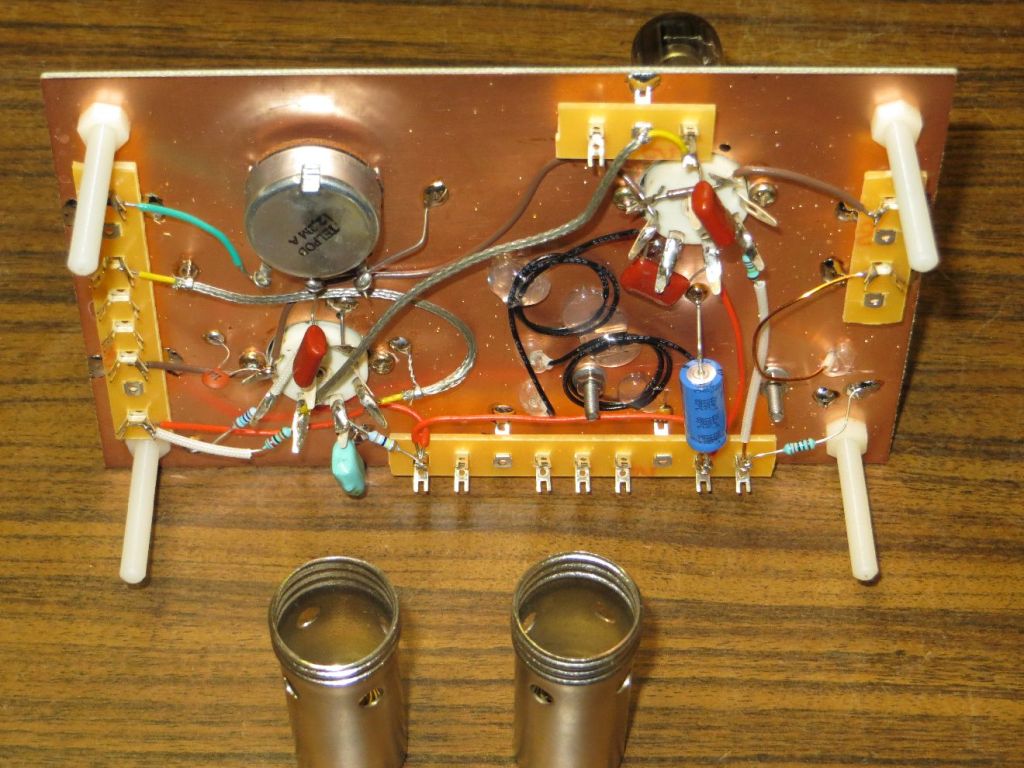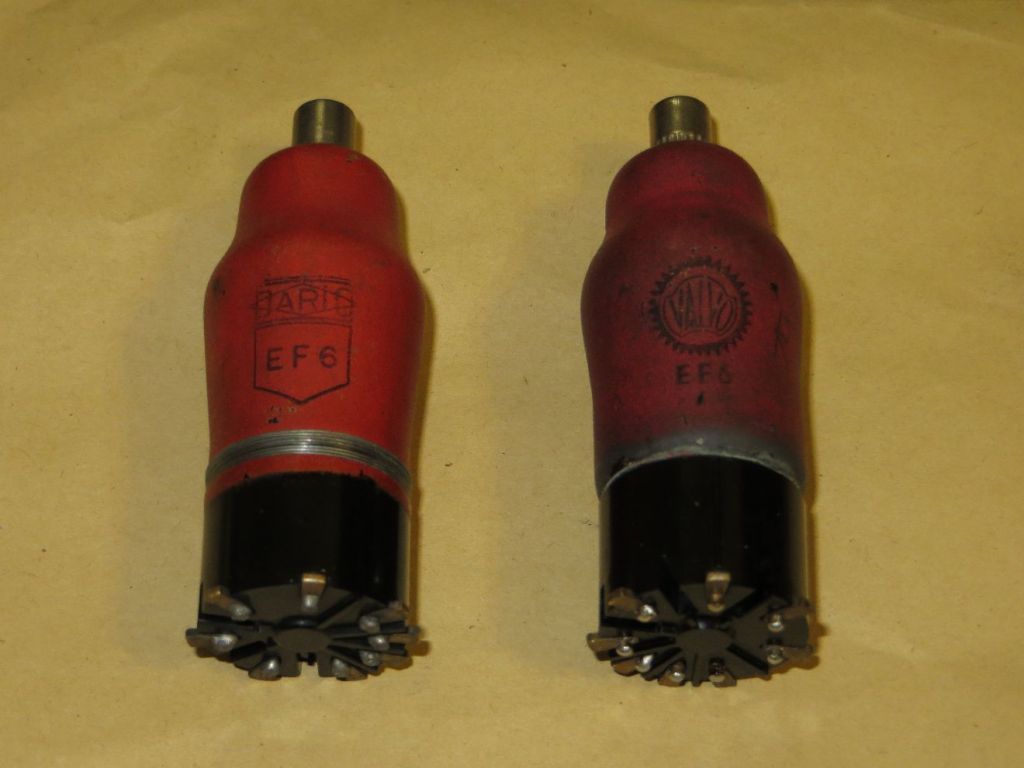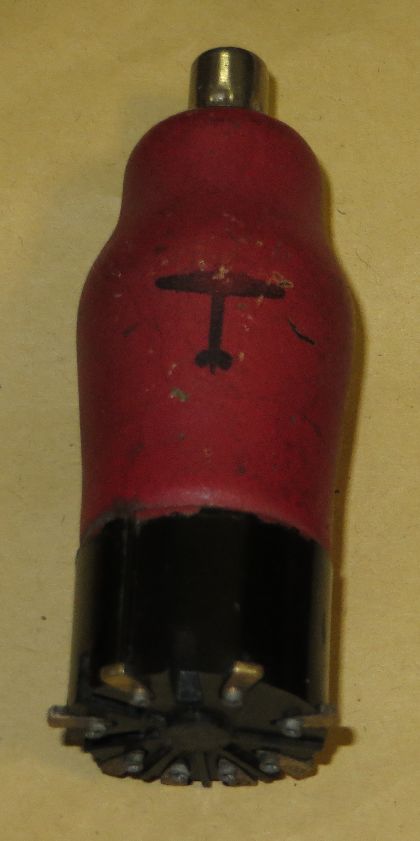Here’s something different for the Xmass / New Year holiday week. I might have mentioned this before – I like vacuum tube stuff, I’ve repaired some radios and B/W TVs, and now I’m building my own radios for fun. AM radio stations might be disappearing but I can always make a small local transmitter to fake some signal.

This is one of the prototypes I’ve been working on lately. It’s just the back end – audio frequency amplifier for the speaker, actually works pretty decently considering the small output transformer (fully rewound due to open primary) and battery-powered tubes 1S5T and 3S4T. The “T” stands for Tungsram, these are modified 1S5 and 3S4 that require only half the heating current (so 1/4 the power) with pretty much identical specs except the 3S4T which is some 20% weaker. The problem here is 1S5T that’s pretty much dead (down to 20% emissions) but still works (with perhaps higher distortions) due to it’s unusual operating point at about 20V of anode/g2 voltage, at which the current is very low anyway.

So I was looking for another 1S5T, cheap since I have some NOS ones but I wanted something for the experiments that I wouldn’t miss if it got accidently damaged or killed. Used, cheap tubes are usually duds but I don’t need much so I’m prepared for it, it’s still 3 or 4 pieces for the price of one NOS. One seller had some other cheap tubes in stock and it so happend that I wanted to buy some for other experiments – and you don’t say no to 5 vaccum tubes for 30$ shipping included. Especially old mid to late 1930 tubes.


As you can see these are well used and require some minor repairs:
- Glass is loose in the bakelite socket, needs some glue – this is normal for these tubes at this age
- Soldering of the tube wires to the contacts at the bottom is very oxidized and questionable, already had some issues so it’s usually best to just resolder everything (which is a PITA due to said oxidation, old solder won’t melt and new one doesn’t stick)
- The outside coat of paint is not just for show, below the red paint is a layer of copper that acts as an EM shield, this is connected to one of the contacts via a wire at the very bottom of the glass part – this is where the paint usually cracks and separates, breaking the connection
The blackened EF6 (that’s not dirt, or if it is I can’t get it off without risking further paint damage) needs the shield reconnected, possibly in a way that other EF6 has been fixed. I’m planning on using some silver-based conductive glue under the extra wire layer to make it more reliable.
Well the 1S5T I got was more than tired, it’s no longer usable – that happens. Frankly these directly heated battery tubes don’t live very long due to limited amout of oxide material that can be put on the thin cathode wire. But the other tubes… First lets look more closely at some of them:



Pre-owned by Wehrmacht and… Luftwaffe perhaps? Funnily enough the clean EF6 is older, marked 10-1938. I’m not buying those for any sort of collection so I don’t much care for these marks but I was not expecting this. What I also wasn’t expecting is the results of electrical testing – I’ve built a small test setup with couple of DC PSUs and 4 digital meters to measure currents and transconductance, at characteristic point given in the datasheets. This provides much more information than a simple emission test that most tube testers do.
So the EF6 have 2.37mA (the Wehrmacht one) and 2.70mA of anode current of the expected 3.0mA when the tube was new. Clearly tired but far from dead. Transconductance S stands at 1.6mA/V and 1.7mA/V of the expected 1.8, that is very usable. The EH2 ones stand at 3.76mA and 3.40mA of expected 4.2mA but at reduced anode voltage (tested at 100V instead of 250V) so it should be better than that. S is 1.32mA/V and 1.37mA/V of expected 1.4 – that’s great! My method might not be entirely correct (S is measured by delta between two DC points instead of AC injection) but I’ve tested quite a few tubes already, NOS ones too, so I know this method produces results very close to datasheet values – so it can’t be too far off.
I guess I’m building another radio based on these tubes then, I’m going to need something like EBF2 for the second IF stage and detector diodes, plus EL3N for the output tube. I got a set of period-correct IF transfomer cans that were meant to work with these (or even earlier) tubes. Winter is a great time to work on such projects – it’s cold outside and the tubes are nice and warm…